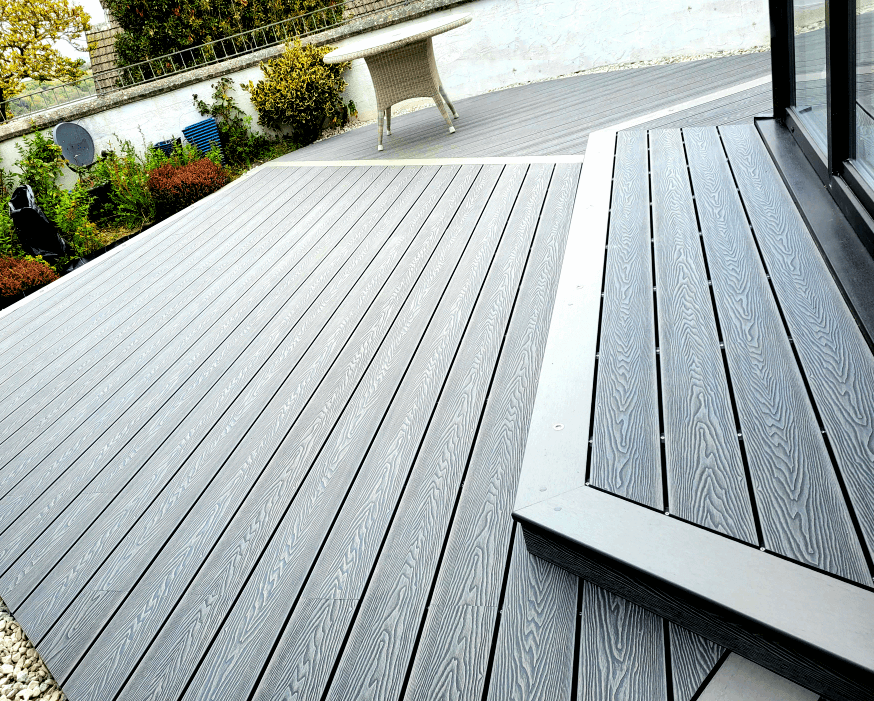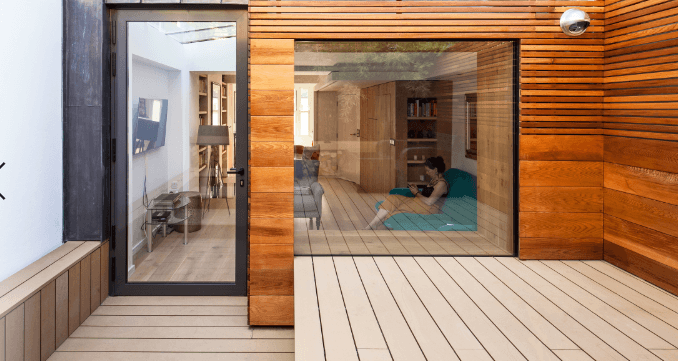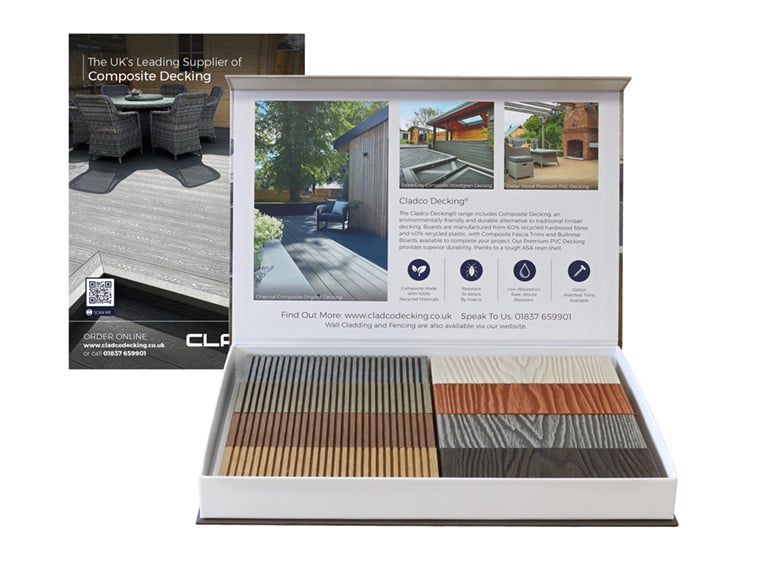Composite decking is a long-lasting, durable alternative to traditional timber. Quality composite decking keeps the look and feel of natural timber while maintaining its environmentally-friendly quality, available with FSC® certification on request..
The manufacturing process involves a combination of recycled plastic and wood fibres, with bonding agents, additives, and tint added to the mix. Also known as wood-plastic composites (or WPC), they can be better for your home in many respects.
Think of composite decking as a blend of plastic synthetic and traditional wood decking and you're on the right track.
THE BENEFITS OF COMPOSITE DECKING
- Low maintenance and requires very little upkeep over its lifespan
- Composite decking maintains its shape, being warp or splinter resistant
- Low-slip properties make composite decking safer to walk on than flat plastic decking
- Composite decking is insect and pest resistant
- Hard-wearing composite boards offer resistance to moderate scratches and stains
- Friendly to the environment - composite boards are manufactured from recycled materials
- Save money in the lifespan of composite decking with lower upkeep costs compared to traditional wood decking
- Materials come ready to use, so there's no need to sand, varnish or paint composite decking products

WOOD VS. PLASTIC VS. COMPOSITE DECK
Not sure on which decking material is best? From timber to plastic, to modern composite material, Here is a rundown on the pros and cons for each type so you can make an informed choice when the time comes to picking the right one for your outdoor space.

TIMBER WOOD DECKING
Pros:
- Cheaper on the initial outlay
- Real wood grain is a given
- Strength underfoot for a solid construction
Cons:
- Higher maintenance costs over time
- Treatment and staining required throughout its lifespan
- Traditional decking is susceptible to rot and insects over the years
PLASTIC DECKING
Pros:
- Lightweight boards for easy installation
- Cheaper on the initial purchase
- Insect resistance and low maintenance
Cons:
- Can crack, bend and warp in hotter climates
- Without a timber effect, plastic boards do not look as good
COMPOSITE DECKING
Capped wood composite decking has many benefits, which include:
Pros:
- Insect and pest resistant
- Lower maintenance costs over its lifespan
- Low-slip properties on decking products with narrow grooves
Cons:
- More expensive one-off costs on the initial outlay
- Solid Core Boards offer better support for heavier objects

Hollow decking is a capped composite material using end caps to seal off the open ends of the boards. This helps to keep insects, like worms or ants, from entering the inside of the boards. Cladco Samples Packs are a great way of previewing decking colours and finishes while in the planning stages and deciding which one you might like to use for your outdoor deck space.
FAQS
What is Composite Decking Made of?
The material used in a composite wood-plastic decking board is made of 60% recycled hardwood fibres and 40% post-consumer recycled plastics (polyethylene). Alongside high quality additives, bonding agent and tints, a Cladco Composite Board is environmentally friendly due to the fact there are no PVC elements or toxic chemicals that could affect the natural environment. The combination of hardwood fibres and plastics means you can achieve the best results for your outdoor project.
Cladco Composite Deck Boards are available with an FSC® certification, on request at the time of ordering. This certification means that any wood fibres used in the Composite Decking meet the standards laid out by the Forest Stewardship Council (FSC®), having been produced from well-managed forests or recycled materials. Giving you the peace of mind that the quality of the products will last for years to come.
What maintenance is needed for Composite Decking?
Although our Composite Decking Boards are low in maintenance compared to a lot of other decking materials, they do not come without any need for upkeep. Due to the natural timber elements in Composite Decking, the Boards do need to be kept clean to reduce weathering.
To keep your Decking maintained, we recommend normal debris like plants, leaves, berries, or animal droppings, is simply brushed from the area with a broom using soapy, warm water.
Please be aware that everyday domestic products, such as suncream or insect spray, may contain chemicals that can cause staining on your Decking. Be careful when using barbecues, as grease can cause damage to the Boards.
How Are Composite Decking Boards Made?
Composite decking is made by a process known as co-extrusion involving the melting and blending of raw materials together. Each product, or raw material, is then fed through a die system while maintaining a constant temperature to create the required shape of the deck. This is to make sure a high level of consistency is achieved from one product to the next in the production line.
Cladco Composite Decking is manufactured with either a Solid or Hollow Core construction. The latter of the two types uses less material in the production process and is less expensive to buy. Solid Core deck boards come at a higher price point due to the increased use of materials during the manufacturing process but provides good sound absorbing qualities for your decking area.
The Difference Between Polyethylene and Polypropylene
Both plastics are found in our everyday lives, but the recycled plastic used in composite decking is called Polyethylene. This is the more common plastic of the two types and is found in many of our everyday products. Polyethylene is a lightweight and durable plastic, ideal for composite decking.
Polypropylene is the second most commonly used plastic after Polyethylene, and has a higher melting point. Being a heavy-duty plastic, polypropylene is commonly used in the car industry, for example, and for packaging and plastic parts for a range of industries.
PLEASE NOTE: In January 2024 we discontinued the 'wide groove' side of our Composite Decking Boards and the 'plain' side of our Bullnose Composite Decking Boards. Some of the boards shown in this blog post may no longer be available.

